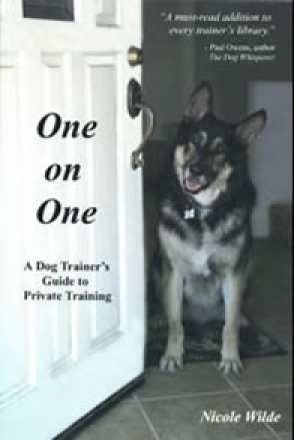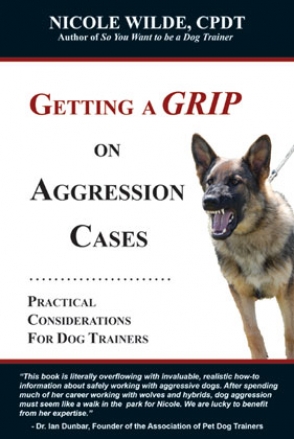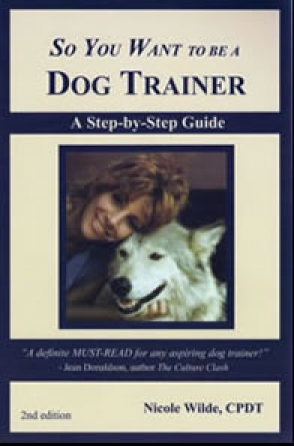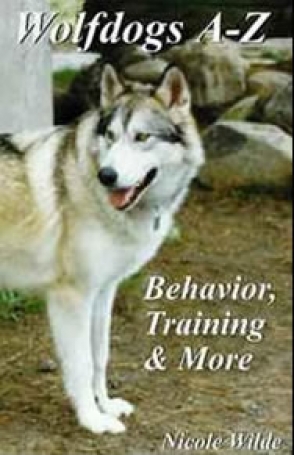Is your dog afraid of strangers? Would he rather hide than play with other dogs? Does he take cover at the sound of thunder, or cringe when you pick up a brush or nail clippers? Never fear!
"Purely Positive?" "Balanced?" Another Perspective
It keeps cropping up on training discussion boards. I’ve heard the term used proudly, and I’ve also heard it slung at other trainers as a slur. I’ve even seen it associated with my own name on blogs—and not ones that were written by me. Who knew I was a “purely positive” trainer? I sure didn’t. Besides, what exactly does “purely positive” mean in the real world?
Any trainer who cares about dogs and has a modicum of compassion and intelligence doesn’t want to hurt dogs in the name of training. A choice of training tools exists, and a wide range of philosophies encompassing the use of those tools expands the arena even further. One person’s definition of purely positive might be: “No corrections are ever used.” Okay, but so we’re on the same page, what constitutes a correction? Is a verbal “no” a correction? How about saying, “eh-eh”—or is that somehow different? What about a stern look? Walking away as though disgusted? If so, call the training police and lock me away, because I’ve certainly done all of those things. My guess is that most trainers have, and the ones who haven’t are few and far between. I also believe that the trainers who never punish a dog by any definition of the term (including consequences such as a dog not getting to go for a walk if he doesn’t sit for the door to open, etc.), are more of a caricature painted by those who don’t care for what they perceive to be permissive training methods, than reality.
Then we have the “balanced” training camp. To my understanding, this term is meant to denote a trainer who uses both rewards and fair corrections. Of course, the actual interpretation of what constitutes a “reward” or a “fair correction” varies depending on the trainer. But whether the training philosophy is “positive” or “balanced,” in a way it’s like religion—you’ve got those followers who fall in the middle of the spectrum, and then the extremists, who are typically not a very good representation of the group as a whole. Someone who is helicoptering a dog, for example, is not a typical representative of the balanced trainer group, any more so than someone who just “slings cookies” at a dog in the hopes that behavior will improve is a good example of a positive trainer.
I’ve always liked the “LIMA” philosophy—least invasive, minimally aversive. Of course, what something even “minimally aversive” consists of and how it’s applied depends on a trainer’s skill and ethics. We each have a place we draw the line as to tools and techniques we’re willing to use. But I have more respect for the trainer—regardless of training philosophy, tools or techniques—who can have a civil conversation with another trainer regardless of their differences, than anyone on either side of the fence with a holier than thou or condemning attitude. I’ve never made a secret of that fact that I prefer not to use e-collars or certain types of equipment, and yet I know people who train with them, who use them with precision and skill, and only in very specific situations. I don’t consider these people fiends—in fact, some are friends. I like to think we’ve learned a lot from each other by listening instead of judging.
Of all the tools in a dog trainer’s toolbox, an open mind is one of the most valuable. Just because you’ve used a particular piece of equipment or technique for years doesn’t mean you shouldn’t be open to reconsidering its use. For example, early in my career I used citronella collars as a means to stop nuisance barking (behavior modification and enrichment was used as well). But after listening to others argue that the lingering unpleasant scent continues to punish the dog after the fact, instead of dismissing them as “those people who just don’t get it,” I reconsidered, and decided to discontinue its use. (And please let’s not have a long, heated discussion about citronella collars—this is just an example.) Or maybe you’ll decide to use a tool you wouldn’t have considered before. Maybe there’s an online discussion of a new type of body harness, and instead of dismissing it as some new-fangled useless piece of equipment, you process the information objectively and make an appropriate decision. Letting go of the knee jerk emotion that accompanies so many discussions of training equipment allows for civil discourse and growth.
I only wish both sides would take the time to engage in dialogue and ask questions instead of standing on the sidelines slinging mud and assigning labels to those who aren’t firmly in their camp, especially when they’ve never had a single conversation with the target of their vitriol. It’s fine to disagree with another trainer’s methodology, and certainly we should all have standards and beliefs that govern our training practices. But if you spend all your time deriding others instead of doing something productive, guess who it really reflects on? The political bs gets just as tiring in the training arena as it does in the political one. Enough already! We may not be able to come to a consensus on a training philosophy, but surely we all care about dogs and the future of our profession. Extending each other a bit of professional courtesy and engaging in open-minded conversation would be a purely positive move in the right direction.










